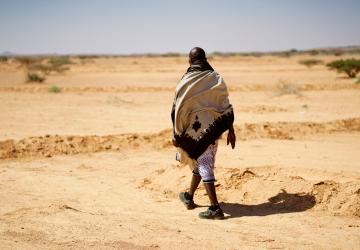How to achieve digital accessibility and disability inclusion in a year: UN in Indonesia’s journey

Imagine surfing the Internet and not being able to understand 96% of the content. This is a daily reality for assistive technology users.
Today, persons living with disabilities make up 15% of the world population – which is why, in our digitally-intertwined era, accessibility is essential.
Inaccessibility in the digital era hinders the full participation of persons with disabilities in numerous aspects of life, from education to work. For example, if video clips lack captions, deaf individuals are at a disadvantage. It is, therefore, not a technical issue but a human rights question.
In 2022, the UN in Indonesia, under the leadership of the Resident Coordinator Valerie Julliand and with strong support from the UN country team, embarked on a journey to substantially increase digital accessibility and inclusion. We have made major strides, and as the coordinator of this initiative, I would like to share the steps UN in Indonesia is taking:
Step 1. Commit to digital accessibility with a clear vision
The UN Disability Inclusion Strategy is a mechanism for sustainable and transformative progress on disability inclusion through all pillars of the UN system’s work. Moreover, information and communications technology (ICT) accessibility is the responsibility of every UN staff member. Ask yourself: Does my UN entity have a clear vision for digital accessibility?
Step 2. Understand the gap
For the UN in Indonesia, this involved assessing digital content for compliance with Web Content Accessibility Guidelines (WCAG), and evaluating staff awareness and competencies regarding accessibility and inclusivity.
According to these guidelines, all digital content - web pages, digital documents, and social media posts - should be perceivable with more than one sense, operable with input devices, and robust enough to be interpreted by a wide variety of users.

Step 3. Plan a change together
We brought diverse teams together to devise an action plan, ensuring inclusiveness in all respects, also related to gender, and will focus on four areas:
- Processes: We set up clear, accessible processes to ensure that all aspects related to the creation and dissemination of digital content is in line with accessibility standards, including monitoring mechanisms.
- Staff Competencies: Improving staff knowledge and skills for all teams on digital accessibility is a critical part.
- Culture: We communicated a clear vision of leadership, ensure regular communication, and support advocates’ networks across UN agencies.
- Collaboration: We increased knowledge exchange and collaboration internally and with relevant stakeholders, including organizations of persons with disabilities. We also learned that it is critical for teams to reflect on why and how to make disability inclusion and accessibility part of their annual activities at the onset of the preparation of their annual work plans, and to include concrete commitments.
Check out UN in Indonesia's accessibility tips and resources for more actionable steps.
Step 4: Engage, build confidence, and empower
Digital inclusion is as much about empathy and mindset as it is about technical skills.
In three weeks, we equipped a quarter of all UN in Indonesia staff with knowledge about accessibility in their daily work. We held 12 interactive, tailored training sessions to over 500 colleagues that ensured they knew how to maintain accessibility standards in simple tasks such as emails and word documents, to produce videos or other communications materials that would keep people with disabilities in mind, or to allow for reasonable accommodations to support staff with disabilities.
This led to a significant enhancement in knowledge and confidence amongst the UN team, with 25% of UN Indonesia staff now equipped with essential knowledge and skills in digital accessibility. It also led to concrete commitments from the UN entities in the country to increase accessibility, from adding alternative texts to all photos to including subtitles in all videos, making hash tags accessible, and checking that all documents uploaded to websites pass accessibility checks.
Step 5: Seek feedback, measure progress, and celebrate
Measuring progress in digital inclusivity requires active solicitation of feedback, both from the internal team and users with disabilities.
As part of our own journey, we were able to include the feedback received to ensure that leadership shared clear messages about disability inclusion being part of the long-term vision. We added the agenda to routine work planning exercises. We also used industry tools to reflect, learn, celebrate, and plan together.
Fostering digital accessibility is an ongoing journey. The digital era is rapidly evolving. This relentless change brings with it a crucial opportunity: the chance to redefine what it means to be an inclusive, equitable society.
This blog was written by Programme Officer at the UN Resident Coordinator’s Office in Indonesia Eunjoo Lee. To learn more, visit: Indonesia.UN.org.











